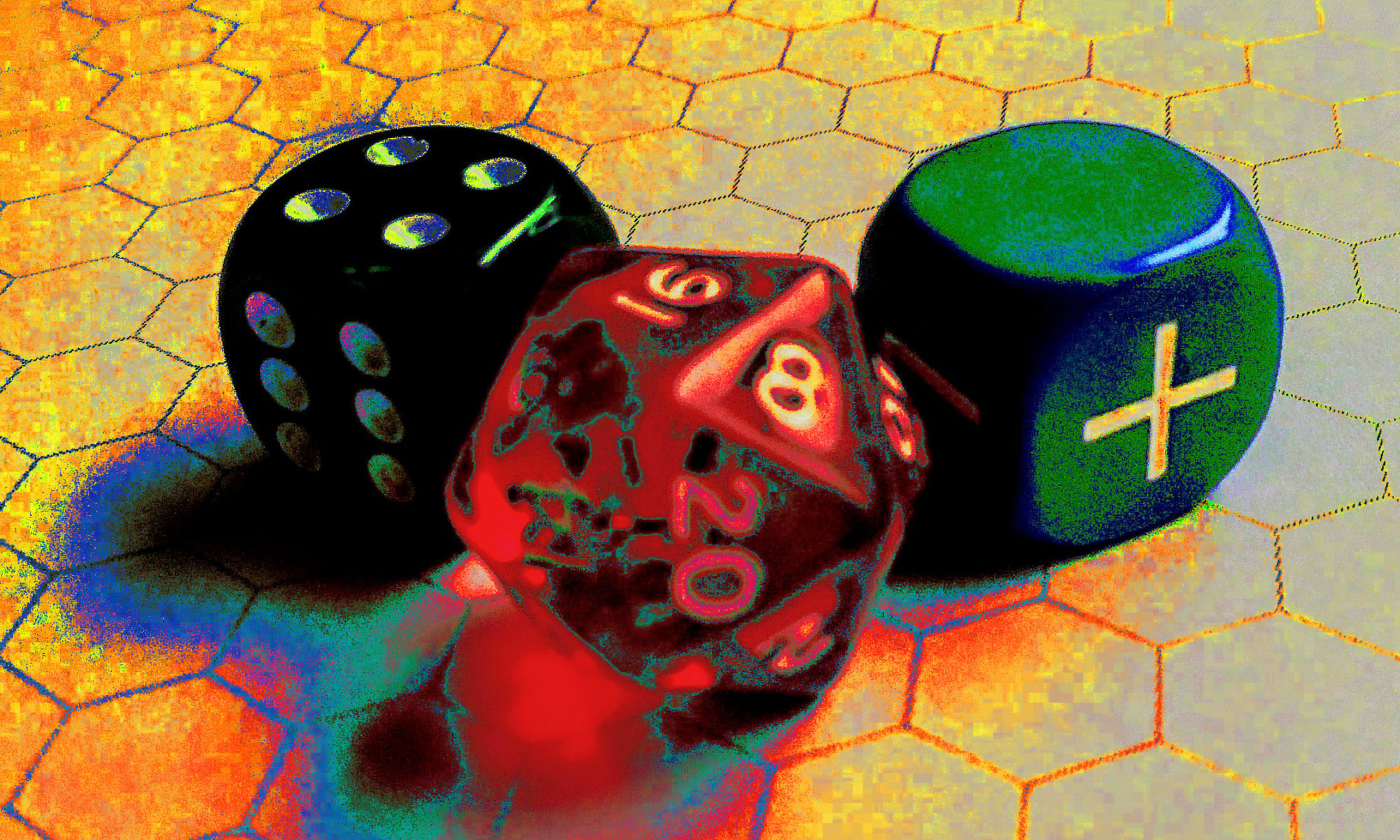Is 2d6 a hype? I see it everywhere. It’s in games Powered by the Apocalypse like Dungeon World, it’s in Maze Rats and Stars without Number.
Powered by the Apocalypse games introduce three possible outcomes to a roll of 2d6:
10 or more: you succeed
7 to 9: you succeed, but there’s a problem
6 or less: the game master gets to make a move, probably introducing even more complication.
That’s cool, it drives the story forward.
The B/X edition of Dungeons & Dragons (1981), which has become sort of lingua franca in the OSR scene, has morale and reaction rolls based on 2d6. In the lack of persuasion skill rolls like deception, fast-talk or savoir-faire, reaction rolls are an important, and actually quite universal mechanic to adjucate non-combat encounters. It goes like this:
| 2d6 | monster reaction | retainer reaction |
| 2 or less | immediate attack | offer refused; reaction -1 on the next roll |
| 3 – 5 | hostile, possible attack | offer refused |
| 6 – 8 | uncertain, monster confused | roll again |
| 9 – 11 | no attack, monster leaves or considers offers | offer accepted |
| 12 or more | enthusiastic friendship | offer accepted; morale +1 |
Quite a lot of role playing opportunity stuffed into this table. Especially the 6 – 8 range should prompt for some interesting social interaction. Of course the GM can liberally count in charisma modifiers and bonus points for good role playing, bribes offered, or penalties because of overall bad behaviour.
Then 2d6 is the principal die roll in many iterations of the Traveller rules up to Mongoose Traveller and Traveller 5. Classic Traveller was released in 1977. And by the way, there is also the Cepheus Engine, an OGL’ed science fiction system based on Mongoose Traveller 1st edition. There are many supplements for Cepheus, also for non-sci-fi genres, turning it into something like generic universal 2d6 based role playing game system.
But it goes further back. Just look at Chainmail, D&Ds supposed predecessor, published in 1971. The man-to-man combat table uses 2d6 against armor class, just like Classic Traveller.
Blackmoor obviously was the first ever tabletop role playing fantasy campaign. Some time ago, I discovered a post on the gaming experience in Blackmoor. Guess what kind of die rolls were done most of the time? Some character sheets from the Blackmoor campaign have been preserved. Isn’t it suggestive, that attributes and skills had numbers mostly in the range of 2 – 12? The Secrets of Blackmoor documentary released recently is well worth a look if you’re interested in the history of geek culture.
Now I find this quite intriguing. Most people think of a d20 when it comes to role playing and iconic images of dice, but rather likely the original role playing dice were 2d6. In one of my recent posts on reddit I asked how the Classic Traveller rules might be related to the Blackmoor campaign. An interesting discussion ensued and of course the answer is obvious. The designers of Blackmoor, Chainmail, D&D and Traveller knew each other, probably exchanged ideas on game mechanics, 2d6 was commonly used in war games, even before Blackmoor, and after all, d6s were much easier to get at then those funky dice D&D demanded.
Just as a reminder, 2d6 result in a simple bell curve (well, more of a roof top curve actually). Here are the odds:
| 2d6 | absolute | at least |
|---|---|---|
| 2 | 2.78 % | 100 % |
| 3 | 5.56 % | 97.22 % |
| 4 | 8.33 % | 91.67 % |
| 5 | 11.11 % | 83.33 % |
| 6 | 13.89 % | 72.22 % |
| 7 | 16.67 % | 58.33 % |
| 8 | 13.89 % | 41.67 % |
| 9 | 11.11 % | 27.78 % |
| 10 | 8.33 % | 16.67 % |
| 11 | 5.56 % | 8.33 % |
| 12 | 2.78 % | 2.78 % |
Finally let my cite this awesome catch all 2d6 based roll playing mechanic found on Norbert G. Matauschs blog, the post is called Back to really simple role playing:
we both roll 2d6; if I’m higher, I say what happens, if you’re higher, you say what happens; if we’re close, we negotiate
What more do you need?
